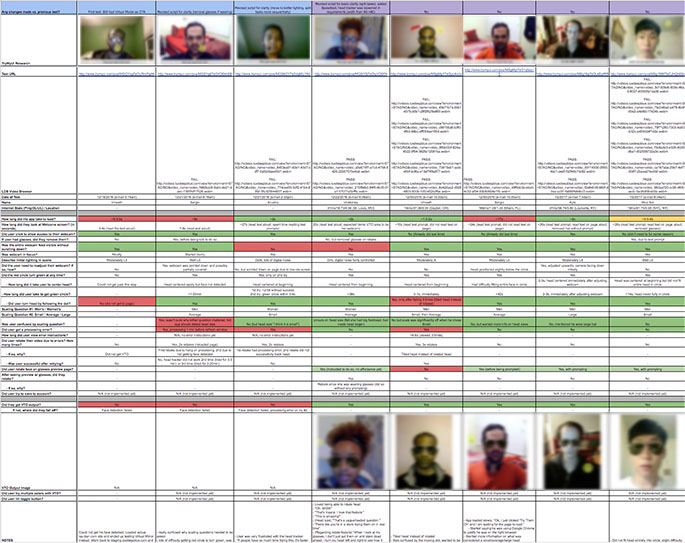Getting colleagues to appreciate the value of UX is a challenge that all UX designers face. Why?
Everyone on the product team has a different perspective. They all have their own priorities they worry about – for example, the product manager is focused on business viability, marketable features, timelines and deadlines. The engineers are focused on writing clean, efficient code that carries out the defined functionalities. Upper management’s main priority is the bottom line.
As a designer, you care about the users. It may seem obvious that everyone should care about the users. But it’s not their job to have empathy; it’s yours.

The UX designer’s role is to empathize with users so as to solve their problems through design, without creating any new ones. Other team members are building the product, marketing the product, selling the product. They probably don’t view empathizing with users as a central part of their work.
Sometimes, the outcome of this is that UX gets de-prioritized and overlooked, and unusable designs live to see a new day. It’s crucial to be able to communicate the value of UX to teammates, so that the entire team has a user-centric perspective when decisions are made.
Empathy in a team setting
The most important skill you’ll need for communicating the value of UX is one you’ve already got: empathy. Not towards users, but towards your colleagues.
If you see from their perspective, you’ll understand better why they are inclined to devalue and avoid thinking about the user experience.
Your insistence on empathy can slow down the process. The PM needs to meet their deadline, but you’re saying the project needs a round of user testing and a new design iteration. The engineers have already coded something that works, but you’re telling them they still need to fix a bunch of design details.

You might hear things like “People would never do that.” “Come on, they’ll figure it out.” “No one is going to use this.” To get them to believe that focusing on UX is worth their time, you have to show them that (1) these issues are real, and (2) solving them will help create a more successful product, not get in the way of it.
Proving the need for UX thinking
We heard a story from one of our customers, product designer Jeffrey Kuo in the Bay Area. He works with a team at an innovation lab for Luxottica, creating software that allows users to preview eyewear on their own faces using their webcam, facial recognition technology, and 3D modeling.

Jeff was running remote user testing studies to test the usability and user expectations of the onboarding experience. The facial recognition step was proving to be a bottleneck: until the software had locked onto the user’s face, they couldn’t do anything, and people were having trouble getting past this step. He did several rounds of testing to see what kinds of issues people were having.
He discovered a variety of factors that were causing trouble. One surprising one was lighting. As it turns out, many people were using their computers in the dark! Dark or dim lighting conditions affected the quality of webcam video, which made it difficult to detect users’ faces, but the team had not realized how prominent the issue was.

As he continued to do research, Jeff started to build a spreadsheet of faces, lighting conditions, and other user behaviors to track how successful users were at completing the onboarding process. He would take screenshots showing each tester’s webcam feed as they tried to position their face, demonstrating the variety of lighting, complexion, and other factors complicating the experience.
This spreadsheet, along with excerpts of testers’ recorded video and commentary, was presented to everyone on the team, so they could see the real use cases that were hindering the success of the project. It served as powerful visual evidence of the diverse challenges users were facing that the software needed to account for. It was also proof of the importance of researching the user experience and keeping a user-centric mindset.
Want to try Luxottica’s best-in-class Virtual Try-On technology for yourself? You can try on pairs of sunglasses at ray-ban.com, sunglasshut.com and oakley.com today!
Helping the whole team with a UX perspective
In addition to showing the need for UX research, it’s also your duty to talk about UX in a way that emphasizes the many ways it interacts with all aspects of the product cycle.
If your colleagues keep thinking of UX as a strictly design-oriented pursuit, they will never fully appreciate how your perspective will actually help them in their jobs.

For example, a good user experience creates a better first impression for new visitors. That makes them more likely to sign up or make a purchase, driving conversion rates higher. Intuitive onboarding and an easy checkout process creates happy, loyal customers who will buy more things in the future and tell their friends about your brand.
In this way, UX is helping to grow both new and returning revenue. It is helping sales and marketing. More intuitive and easy-to-use interactions also reduce support queries, saving time for the customer support and development teams.
In addition to all this, cutting out UX would never have really saved time at all – even if it seems like it at the moment. Instead, it creates UX debt: usability problems that pile up, frustrating users, harming performance, and dragging down KPIs, until they’re fixed later. However, if you include a UX perspective from the beginning, things like user testing can be planned into the timeline so they won’t slow anybody down.
Fitting UX into the big picture
Ultimately, this is a process that will require changes in thinking from everybody – even you. You might have to push yourself to think outside the box about what your practice of UX means for the rest of the business. When you propose design changes, you should preemptively think about why they will matter for sales, for customer retention, or for engineering efficiency. What benefits will the rest of the team reap?

For your colleagues, they will have to re-learn what they think they know about UX and design. You can help them by empathizing with their needs and priorities, and making it clear how practicing good UX design will complement those. Speak in their language while they learn to speak in yours.
UX is an essential component of a successful product team, but it starts with everyone understanding and respecting what a UX mindset has to offer. Once your team has seen that value, you can go far together.





